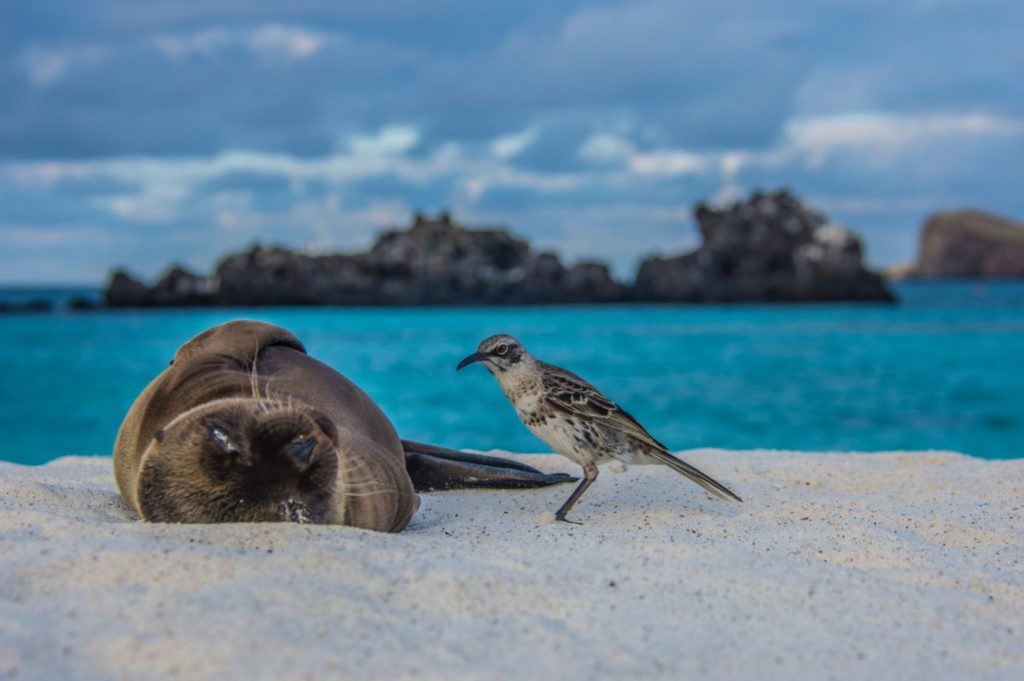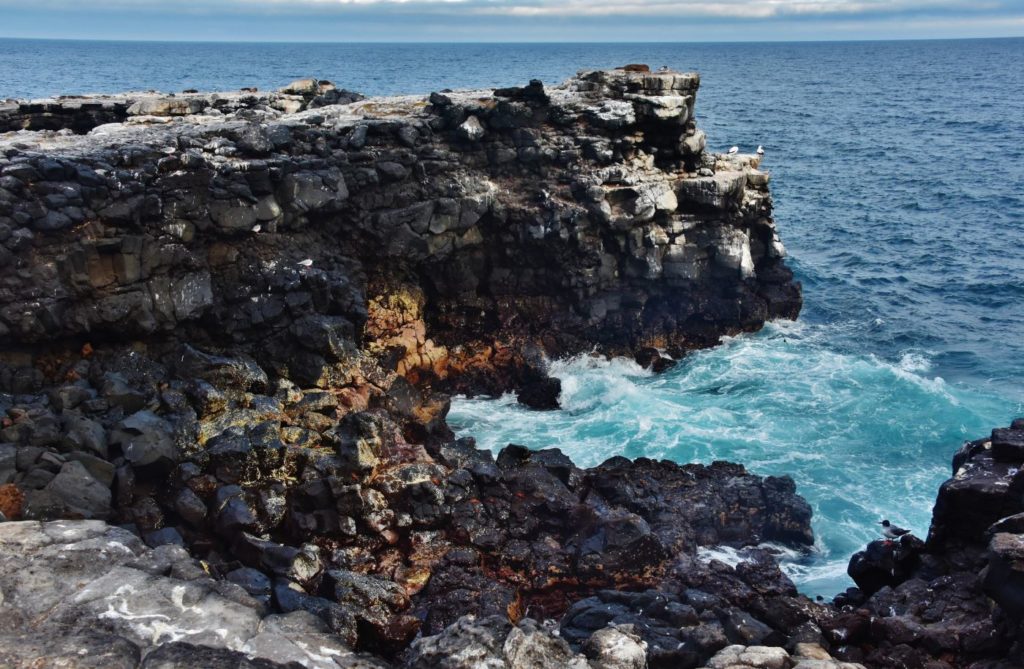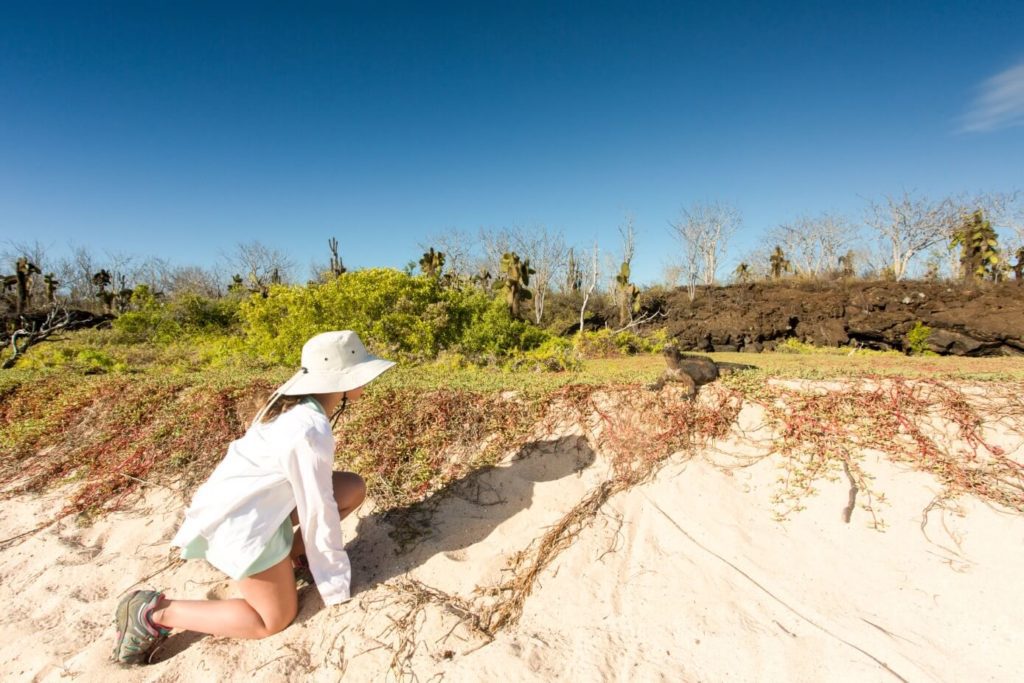The Galapagos is widely known for having many unique species, and this adds to the incredible biodiversity of Ecuador. It is worth noting that while the number of species is not similar to a rain forest, the uniqueness of the Galapagos endemic species is what stands out. Think about penguins and tropical fish together. How can that happen? You’ll love learning more about the wildlife in the area while on holiday. These great ideas will help you plan the trip of a lifetime as you immerse yourself in the native environment of different species.
Explore the Galapagos Islands with expert naturalist guides!
Helpful Tips for Exploring the Biodiversity of the Galapagos

When Charles Darwin first visited the Galapagos Islands, he was amazed at the diverse range of life found here, and this was the basis for his conclusions while polishing his masterpiece Origin of Species. So much was to be analyzed, that the writing was completed nearly 25 years after the voyage of the HMS Beagle.
TALK TO A DESTINATION EXPERT

Diego Zapata

Rosa Mena

Sandy Lara

Diego Zapata

Rosa Mena

Sandy Lara
There are numerous species of land and marine life that are found here, including species like the Galapagos penguin, sea lions, giant tortoises, sharks, marine iguanas, tropical fish, gulls, boobies and many others. For many of the world explorers who visit the Galapagos Islands each year, learning more about the biodiversity and unique animals in the area is a top travel goal. There are some helpful tips that you can follow to help you immerse yourself in the environments of these creatures more successfully.

Consider the Time of the Year
Contrary to much popular wildlife and nature-oriented destinations, there is no bad time to visit the Galapagos. Places like the US Virgin Islands, Alaska, Patagonia, Falkland Islands, etc, are outstanding in the type of experience they provide, but there are times of the year when such places are not hospitable enough for tourist activities to occur. Fortunately, the Galapagos Islands do not have weather-related events or wildlife migration patterns that could detour you from a particular time of the year. The only bad time there is when you are not there. Now, there are certain times of the year where certain conditions could enhance the overall experience of our explorers, plan your trip wisely by learning about the best time to visit the Galapagos Islands.
For example, from December through May, people love to experience the true tropical side of the islands which matches the warmest waters; this is great for snorkeling and scuba diving since the highest visibility will be expected. This doesn’t mean that from June through November visibility is bad. The tradeoff then is to find more plankton in the water and having marine species more active than usual as they search for blooming feeding grounds. When it comes to wildlife, the most representative species of the Galapagos will be there all year round, just doing different things throughout the year. For example, blue-footed boobies in April are busy looking for potential mates, but then in July, the result of such quest will be rewarded by seeing plenty of nests with fluffy-looking chicks. Sea lions are seen all year round too, but between August and October is when the vast majority of pups are born. These youngsters are the most playful water creatures you can possibly imagine by November.
These are only a few of the many examples of peak times to travel to Galapagos, so you may consider learning more about the activities of the wildlife in the Galapagos for the time of the year that you’re thinking about traveling. This will help ensure that you have the experience you’re hoping for while visiting the area.
Be an Observer

Much has been written and said about tourism causing damage to the fragile ecosystems in the Galapagos, and this damage usually stems from tourists who are overly eager to have personal experiences with the wildlife. The lack of common sense sometimes can be the biggest source of impact in fragile places. What is usually not mentioned is that tourism is the most effective awareness voice when it comes to understanding how pristine the islands are. No more than 210,000 visitors per year explore the islands (Yellowstone National Park receives over 700,000 in just the summer month of July!).
With such high levels of exclusivity, planning a trip requires time and patience. Since all activities are controlled and managed by the National Park authority, it is best to take a guided tour where you will be requested to always follow the instructions of your Naturalist Guide. Keep in mind that the goal is to observe rather than to interact with the animals you encounter. For example, a guided outing to see them.

Javier Garcia

Eduardo Silva

Carolina Escobar
START PLANNING YOUR TRIP

Javier Garcia

Eduardo Silva

Carolina Escobar
Get in touch for more
CONTACT US
Look for Guided Tours
If you are part of an organized trip, like onboard an expedition vessel, then all activities will be guided and some leisure time will be assigned daily for beachcombing, swimming, etc. If that option is your choice, then you are all set. However, there are many activities that you can do on your own, such as renting a sea kayak and touring the coastline at your leisure, renting mountain bikes for recreational biking, walking and strolling on your own at certain locations, and more.
These excursions can be fun, offering you the opportunity to view the wildlife on your own. However, if you want to see specific things on your trip, such as flamingos in salt-water ponds, the many types of beaks on finches, fur seals in grottos, etc, it is best to be part of an organized trip as mentioned earlier. Of course, as in all wildlife-rich destinations, there are never any guarantees that you’ll see all the wildlife you want or right up front, but here again, is when local Naturalist Guides are the best sources since they pay close attention to the wildlife behavior. They know where they were yesterday, and they may have years of experience monitoring their actions according to the weather and more.


